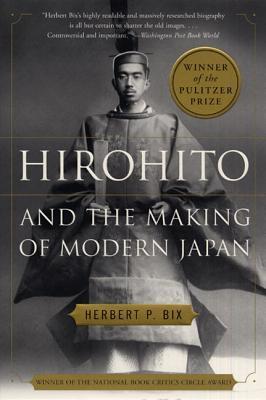What do you think?
Rate this book


832 pages, Paperback
First published August 22, 2000
Hirohito was not a gregarious, outgoing person with a wide assortment of friends fond of writing candidly about him. He was a reticent person who spoke most eloquently sometimes by not speaking at all. Socialized to public opacity, he was trained also to private wariness. He left behind no abundance of texts with his signature on them, revealing his thoughts and enabling us to capture his responses to the major events that he lived through. On ceremonial occasions...he wrote waka poems...[b]ut he published no reminiscences and usually expressed his ideas or intentions only through others, who found it disrespectful and inappropriate for a Japanese subject to write critically about him.Bix would go on to further detail the off-limits sources: personal correspondence with family members, the "Record of the Emperor's Conversations," the diaries of people who served him, and the entirety of the Hirohito folder in the U.S. National Archives. This leaves the historian without access to the usual concentrations of data, and Bix scoured wide ranging sources for hints, scraps, tidbits, and other clues to build a narrative. What results is something less like a biography of Hirohito and more of an account of the institution of the monarchy relative to other state powers - political parties, parliament, the cabinet, and the military. A more descriptive title would have been "The Rise and Fall of Imperial Japan."
The high points of his visit to Britain included a three-night stay in Buckingham Palace, speeches at London’s Guildhall and Mansion House, visits to numerous British military facilities (where he sometimes wore the uniform of a British army general), visits to both houses of Parliament, the British Museum, the prime minister’s mansion at Chequers, the towns of Windsor and Oxford, the universities of Oxford, Cambridge and Edinburgh, a three-day stay at the castle of the duke of Atholl in Scotland, and a tour of Manchester and the Midlands industrial region.What intrigued me (as I was still reading this as a biography) was that these were the "high points" of Prince Hirohito's visit - thus this is what made an impression upon him early in formative years as an international figure. There is no further discussion, however, of why or how this was a significant part of his tour or what it meant for his life. In fact, the total lack of follow-up suggests that Bix wasn't referring to the "high point" from Hirohito's point of view at all but was rather attempting to liven up the narrative and make it more descriptive - something like a tourist brochure. This would not be the only time this or something like it happened. In several instances Bix would include some provocative statement but without including the supporting details or examples that would make the point illustrative or persuasive. Thus when he notes that during the Allied occupation, Japanese political leaders were able to "downplay, without ever explicitly repudiating, the Shinto foundation myths that, in any event, few Japanese still believed," I latched onto the part about few Japanese believing the Shinto foundation myths. That is meaningful in understanding the roots, stability, and appeal of the monarchy, and it would be surprising to me that the foundation myths did not have a devoted following. If one follows the footnote to the citation, one finds, "Akazawa, 'Shocho tennosei no keisei to senso sekininron,' p. 46. Only I don't speak Japanese, and I don't know who Akazawa is. I can't even tell what information is being attributed. Is this citation pointing to the evidence about the decline in belief of Shinto foundation myths or is this simply what someone in leadership believed at that time? It comes from a 1976 source, thus is it one of the apologetic post-rationalization documents we are supposed to treat suspiciously or one of the candid accounts we are supposed to give more weight? Bix would do this regularly - make bold statements (that usually supported his thesis) and provide a footnote (without explanation or discussion) to a work that would be inaccessible - un-indentifyable even - to non Japanese-speaking audiences. At times this would be less central to the book's main argument and was simple laziness. For instance, when discussing Hirohito's funeral, Bix writes, "Like that of the Showa emperor before him, the pageantry was all government-financed, but less elaborate this time and less hyped. The public looked on with pleasure, but few seemed moved by it." This would be a great place for detail. Give us a paragraph on the emperor's funeral before Hirohito. Give us a paragraph about the arrangements and organization of Hirohito's funeral. Provide some examples, anecdotes, or newspaper headlines that show how it was "less hyped." This kind of sentence is a good topic sentence; you would then follow it up with the detail and evidence that makes this a history. Instead, Bix often used these as summary sentences framing the narrative that he wanted without making the effort to persuade the reader that he had good reasons for doing so.